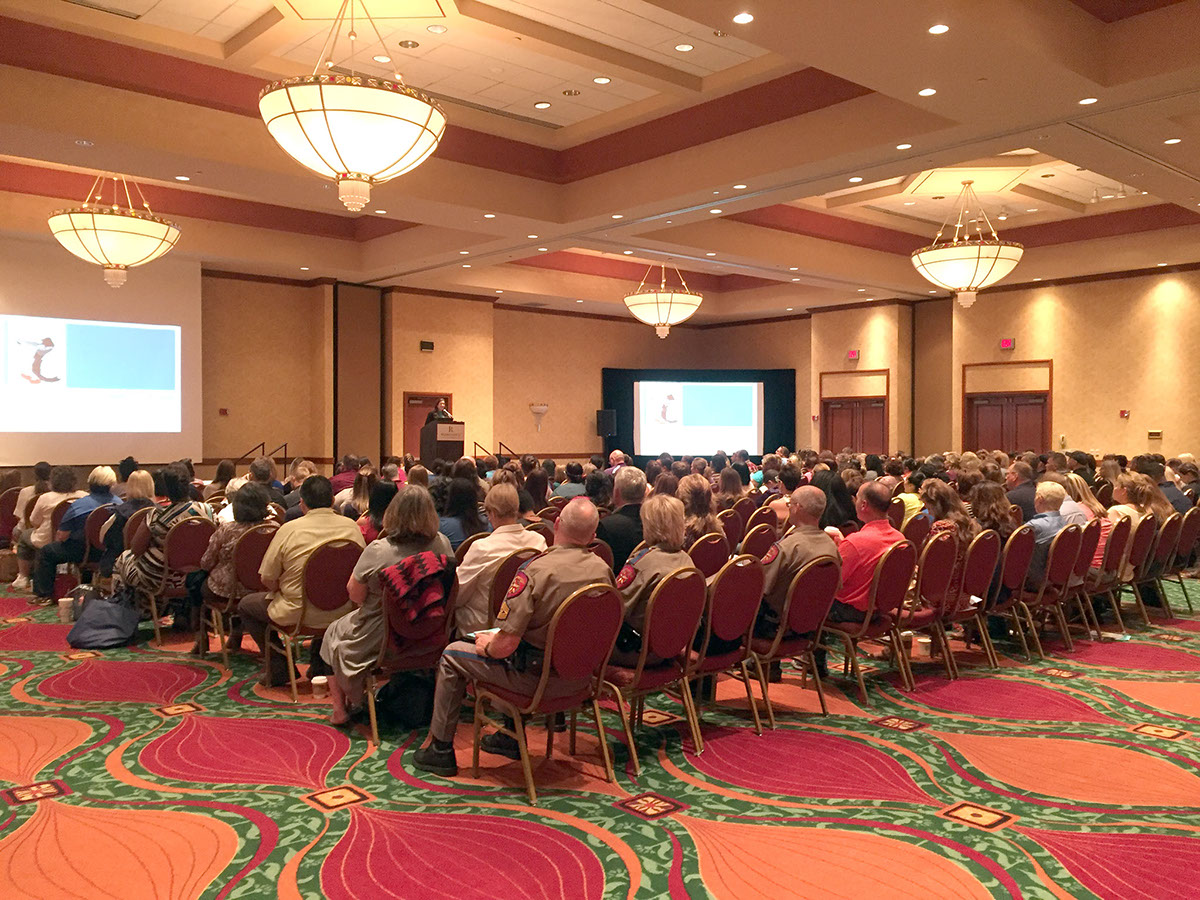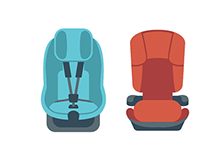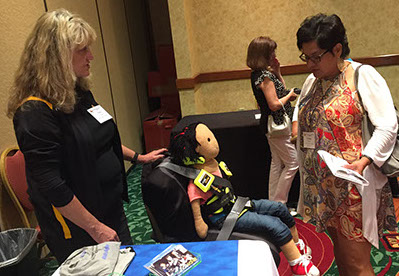
VOLUME 3, ISSUE 2
MENU

Unites Child Car Seat Technicians for Unique Gathering
Statewide Safety Conference
A Texas conference dedicated to child passenger safety was held in Richardson, Texas, July 10–12, highlighting the enormous strides made in the last 25 years to protect children who ride in safety seats. But it also revealed how much more work needs to be done.

A majority of children who ride in child safety seats — some estimates show as much as 80 percent — are not properly restrained. According to the National Highway Traffic Safety Administration, a child is involved in a crash every 33 seconds.
Sponsored by the Texas Department of Transportation (TxDOT) and organized by the Texas A&M Transportation Institute (TTI) and Texas A&M Agrilife Extension, the 2017 Texas Child Passenger Safety Conference was attended by safety advocates, health care professionals, law enforcement officers, and about a dozen seat manufacturers. But the main group of attendees was an army of child passenger safety technicians and instructors (CPSTIs).
 Many of the nearly 300 CPSTIs conduct child seat checkups as part of their employment with hospitals, emergency medical services, TxDOT, Texas A&M Agrilife Extension offices and others, but many volunteer their time to the never-ending task of educating families about the proper installation and use of car seats.
Many of the nearly 300 CPSTIs conduct child seat checkups as part of their employment with hospitals, emergency medical services, TxDOT, Texas A&M Agrilife Extension offices and others, but many volunteer their time to the never-ending task of educating families about the proper installation and use of car seats.
“I’m sitting in a room full of heroes right now. Each and every one of you saves lives. I commend you in what you do as child passenger safety technicians,” said Lonny Haschel, a Texas Department of Public Safety trooper and the conference emcee. Haschel is also a CPSTI.
During the numerous sessions, attendees heard from health professionals, pioneers in the child passenger safety crusade, researchers, car seat manufacturers and the author of the 2017 Lower Anchors and Tethers for Children Manual, known as the LATCH Manual. (Considered to be the definitive text for CPSTIs, the manual includes updates on the proper way to install the many car seat models in older and newer model vehicles.)

“There are many confusing elements associated with proper child safety seat installation and use,” says TTI Senior Research Scientist Katie Womack. “Each seat is different, and each child is different. The car seat has to be matched to the child and the vehicle correctly.” Womack is the manager of the Behavioral Research Group at TTI’s Center for Transportation Safety. She is responsible for observational surveys to assess the safety belt and child restraint use rates for Texas.
Conference workshops and session topics included Working with Children with Special Needs, Preschool Transportation, Child Safety Seat Distribution and Education Program, Heat Stroke, Car Seats and Crash Performance, and LATCH.
“The risk of major injury to children is 40 percent higher for children who are riding in the front seat, and their injuries are much more severe,” Joe Colella of Traffic Safety Projects told those attending his session. Colella cited numerous seating position studies during his presentation. He became a child passenger safety advocate following the death of a three-year-old family member in 1994.
View interview with Joe Colella of Traffic Safety Projects.
“There are many confusing elements associated with proper child safety seat installation and use,” says TTI Senior Research Scientist Katie Womack. “Each seat is different, and each child is different. The car seat has to be matched to the child and the vehicle correctly.”


Joe Colella:
Tragedy Turns Uncle into Child Safety Advocate
A few days after three-year-old Dana Hutchinson was severely injured and later died as a result of a car crash, her uncle, Joe Colella, began a crusade that would change the rest of his life. His efforts would also lead to vast safety improvements and much more awareness of the importance of matching a car seat to an individual vehicle seating position and child.
It was 1994, and Dana’s parents were unaware that her car seat was dangerously installed with the vehicle’s ill-fitting safety belt. To install car seats properly, such belts would need to be partially replaced.
“When I saw the police report that said the seat was not properly installed, I started digging,” Colella explained. “What I found was that there were a lot of issues in child passenger safety.”
In Dana’s case, the car’s safety belt could not keep the seat secure. As a result of the crash impact, her body moved forward, and she suffered a severe head injury.
Colella reached out to the National Highway Traffic Safety Administration (NHTSA), car seat and vehicle manufacturers, and anyone else who would listen — including the media.
“A few days after Dana’s death, I started sending out press releases, and some got picked up,” he said.
Contacts with the media led to major newspaper articles, a Today Show appearance, and — most importantly — a blue ribbon panel set up by NHTSA called Child Restraint and Vehicle Compatibility. The five-month-long panel, in which Colella himself was appointed, produced 27 recommendations including the LATCH system. LATCH is an improved, separate attachment system that anchors car seats securely to motor vehicles, reducing installation errors.
And, in 1997, a certification program was developed that teaches car seat technicians the proper way to install car seats in older and newer vehicles. Over 100,000 people have been trained in the program with 40,000 people currently certified.
Since 1994, Colella says the number of children who die in car crashes has been cut in half, with much fewer severe injuries. Even with all the improvements, he says much more can be done to improve child passenger safety.
The keynote speaker, Pediatrician Benjamin Hoffman, presented, "Why Kids Need Effective Advocates" and, during a workshop session, detailed a study at his hospital that examined the improper use of car seats among 291 families with newborns.
“Ninety-five percent of families had at least one misuse of car seats,” he said. “And this is where it gets really scary. The average family had five serious misuses.”
View interview with Pediatrician Benjamin Hoffman and his child safety advocacy, especially regarding children born to poverty.

Another conference session examined how the epidemic of child obesity impacts safety seat use. “Typically, one in three children is overweight or obese,” Kim Hermann of Safe Kids Worldwide explained. “This is going to impact what seat is most suitable for that child. Nationally, this is a huge problem. Some technicians in some areas will be dealing with this more than others.”
There are approximately 1,800 CPSTIs in Texas. In order to keep up with the continuous changes in automobiles, technology, safety seat styles and models, laws, and the latest research, CPSTIs are required to be recertified every two years.

